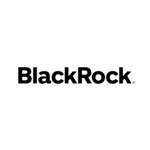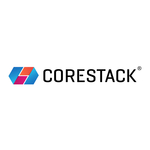Worldwide Cloud Point of Sale Industry to 2026 – Retail Segment is Expected to Hold Major Share
Dublin, Oct. 28, 2021 (GLOBE NEWSWIRE) — The “Cloud Point of Sale (PoS) Market – Growth, Trends, COVID-19 Impact, and Forecasts (2021 – 2026)” report has been added to ResearchAndMarkets.com’s offering.
The Cloud Point of Sale (PoS) Market is expected to register a CAGR of 24.2% during the forecast period of 2021 – 2026. Large businesses, making thousands of dollars in transactions on a daily basis, rely on cloud POS not just to understand the sales performance, but also to better manage their inventory on the basis of the products/services that attract most customers. With increasing risk related to the handling of cash, online transactions are gaining popularity, owing to the streamlined processes involved.
According to a study, across small businesses, about 64% of single-store retailers did not adopt a POS system in 2019. ROI of these POS systems may not be recovered immediately, which is one of the reasons for the relatively lesser penetration of POS terminals, as compared to large businesses. But with monthly and annual subscriptions associated with cloud PoS in which the companies can choose the number of services needed and pay accordingly is expected to help boost the market in the coming years. For instance, some businesses might only need credit card processing and essential payment management, and others might need add-ons such as loyalty, inventory, or delivery management.
Factors such as an increased emphasis on business process optimization, globalization of e-commerce, and growing cashless transactions are fueling the adaptation rate of automation in industries such as retail, entertainment, hospitality, and others. In the retail sector, the surge in automation is dominated by PoS systems. With increased benefits such as lower upfront cost, data protection, customization, and scalability, the demand for cloud PoS market is expected to grow across various end-user industries.
Many companies are adopting partnerships to launch cloud POS. For instance, Future Group, one of the largest retailers, announced that it would launch a new cloud point-of-sale (PoS) system, with LivQuik, which is a payments technology company.
Due to the coronavirus pandemic, Android-based POS systems, which are almost solely manufactured in China, are most affected. Moreover, there is a shortage of swipe machines to process digital payments at retail outlets. Coronavirus can be transmitted via payment terminal buttons. However, it is expected that COVID-19 will significantly impact shopper behavior. Therefore contactless payments might provide merchants and issuers with an opportunity to improve payment security, transaction speeds, and customer experience. Thus, the growth of the contactless payments market, over the forecast period, is expected to provide more significant opportunities for the vendors in the market under study.
Key Market Trends
Retail Segment is Expected to Hold Major Share
- Cloud-based POS applications follow a subscription-based model typically, sometimes without a long-term contract, the cost of which covers benefits such as licensing, customer support, data hosting, and software updates. Businesses usually pay per touchscreen device using the software. Subscription plans are flexible, and therefore, one can change the number of devices or cancel any time. For instance, In September 2019, NCR Corporation announced that Northgate Gonzalez Market had deployed NCR Emerald, the next-generation, cloud-enabled point-of-sale (POS) platform offered on a subscription basis for grocery retailers.
- With the increasing mobility trends across the world and the growing emphasis on multichannel selling, mobile POS systems are gaining traction. With the advent of cashless transactional technologies, cloud POS has witnessed an increase in the adoption rate owing to the need for sales and inventory synchronization, improve customer experience and retention. For instance, according to U.S. Census data released in February 2020, eCommerce is on a steady upward trajectory.
- The sales reporting, inventory, financial management, and the customer analytics features, which cloud POS facilitate, assist the businesses to address the customer retention issues. Therefore, the need for customer retention and competition growth of the industries promote the growth of POS terminals. Moreover, Cloud PoS eliminates data storage and security issues along with software maintenance issues as the data is handled by the PoS vendor at a remote and secure location.
- Lockdown due to Corona Virus has resulted in the closure of non-essential businesses. This has eliminated millions of small retailers’ ability to sell in-person. Although these government-mandated closures are temporary, the length of the same is skeptical about being measured. Similarly, these closures might change the small retail landscape when this is all over. Changes such as these might provide opportunities to Cloud PoS vendors to further penetrate the customer base in the retail industry.
North America is Expected to Hold Major Share
- The United States is a significant segment in the North American POS terminal market. For several years, various types of POS terminals have been used in outlets in the country, thus boosting the need for replacement with updated technologies. Hardware sales, digital POS, cloud subscriptions, or mPOS transactions, from futuristic hand-held tablets with a payment terminal to sleek all-in-one machines, is on the rise across North America.
- There is a high demand for new touch screen hardware, fully loaded Cloud Point of Sale (POS) software along with small and medium-sized merchant demand leading to a significant change in the POS industry of the region.
- With cloud-based apps on the rise and expected to replace machine resident programs in the future, robust reliable and proven hybrid multi-function configurable POS systems, like POS-n-go, will meet the business needs of small and medium-sized merchants and restaurants across North America. Most of the convenience retailers in North America depend on NCR POS hardware and software.
- Recently, Lightspeed POS announced the initial availability of Lightspeed Payments for hospitality merchants in the United States and retailers in Canada. The company is eliminating the need for a separate payments provider so that new and existing Lightspeed customers can benefit from Lightspeed Payments’ direct integration with the commerce platform that saw its merchants growing faster than industry averages in 2019.
Competitive Landscape
The cloud point of sale (PoS) market is highly fragmented with the presence of a large number of players that occupy around half of the market share. These players are investing large amounts of money on R&D activities to introduce innovative payment technologies in the market.
- January 2020 – Hewlett Packard Enterprise announced the launch of two services named HP Engage Console and HP Engage Catalog to benefit small businesses in the retail and hospitality industries. These two new Cloud services are designed to expand the features of Point of Sale (PoS) systems in local stores, cafes/restaurants, lodging, travel, and other small businesses. The new services are also expected to benefit Independent Software Vendors (ISVs) helping developers to reach a wider audience via a unique app marketplace.
- October 2019 – Seiko Epson Corp., partnered with Panduit Corp., to develop printers and labels for the industrial, construction, and network infrastructure industries. According to the terms, Epson will be designing and manufacturing new label printers for Panduit apart from its brand LABEL WORKS PX series.
Reasons to Purchase this report:
- The market estimate (ME) sheet in Excel format
- 3 months of analyst support
Key Topics Covered:
1 INTRODUCTION
2 RESEARCH METHODOLOGY
3 EXECUTIVE SUMMARY
4 MARKET DYNAMICS
4.1 Market Overview
4.2 Industry Value Chain Analysis
4.3 Industry Attractiveness – Porter’s Five Forces Analysis
4.4 Market Drivers
4.4.1 Increasing cashless transaction
4.4.2 Increased Business Mobility and Flexibility
4.5 Market Restraints
4.5.1 Lack of Infrastructure, and High Dependence on Legacy Systems
4.6 Assessment of Impact of Covid-19 on the Industry
5 MARKET SEGMENTATION
5.1 By Component
5.1.1 Hardware
5.1.2 Software & Services
5.2 By Type
5.2.1 Fixed Point of Sale
5.2.2 Mobile Point of Sale
5.3 By End User Industry
5.3.1 Entertainment
5.3.2 Hospitality
5.3.3 Healthcare
5.3.4 Retail
5.3.5 Other End User Industries
5.4 By Geography
5.4.1 North America
5.4.2 Europe
5.4.3 Asia Pacific
5.4.4 Latin America
5.4.5 Middle East and Africa
6 COMPETITIVE LANDSCAPE
6.1 Company Profiles
6.1.1 Software
6.1.1.1 Square, Inc.
6.1.1.2 Intuit Inc.
6.1.1.3 Shopify, Inc.
6.1.1.4 Vend Limited
6.1.1.5 Clover Network, Inc.
6.1.1.6 Lightspeed POS Inc.
6.1.2 Hardware
6.1.2.1 Toshiba Global Commerce Solutions
6.1.2.2 Seiko Epson Corp.
6.1.2.3 Samsung Electronics Co. Ltd.
6.1.2.4 Micros Retail Systems Inc. (Oracle)
6.1.2.5 Hewlett Packard Enterprise
6.1.2.6 Panasonic Corporation
6.1.2.7 NEC Corporation
6.1.2.8 Casio Computer Co. Ltd
6.1.2.9 NCR Corporation
6.1.2.10 Dell Corporation
7 INVESTMENT ANALYSIS
8 MARKET OPPORTUNITIES AND FUTURE TRENDS
For more information about this report visit https://www.researchandmarkets.com/r/n54pyy
CONTACT: CONTACT: ResearchAndMarkets.com
Laura Wood, Senior Press Manager
[email protected]
For E.S.T Office Hours Call 1-917-300-0470
For U.S./CAN Toll Free Call 1-800-526-8630
For GMT Office Hours Call +353-1-416-8900



































